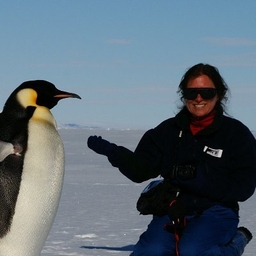
Veronika Meduna
Science, Environment and Health Editor at The Conversation
Sci/env editor @ConversationEDU | writer @NZGeographic @AGU_Eos | Books about climate change and Antarctica | you can find me on Bluesky
Articles
-
3 weeks ago |
science.org | Veronika Meduna
New Zealand’s research sector was again left empty-handed in this year’s budget, which largely reallocated existing funding to pay for the center-right government’s plans to boost the economy and entice international investment in science and innovation. Many researchers described the budget as unsurprising, but nevertheless disappointing.
-
3 weeks ago |
nzherald.co.nz | Veronika Meduna
Sailor Bill Hay deploys an eDNA kit as part of one of the world's largest-scale ocean surveys. Photo / Supplied This month, a fleet of sailing boats left the Bay of Islands to compete in the Island Cruising Pacific Rally. But 20 yachts will do more than race across the vast ocean passages between island nations.
-
3 weeks ago |
nzherald.co.nz | Veronika Meduna
Suspicious minds: Elvis Presley gets the polio jab in 1956. Photo / Getty ImagesVaccine Nation couldn’t be more timely. The latest book by internationally acclaimed Australian epidemiologist Raina MacIntyre traces the widespread post-pandemic drop in support for public health measures and vaccination.
-
1 month ago |
plantandfood.com | Veronika Meduna
-
1 month ago |
nzherald.co.nz | Veronika Meduna
One of de-extinction company Colossal Biosciences' "dire wolf" pups at three months. Photo / ColossalWhen a snow-white wolf appeared on a recent cover of Time magazine, billed as the resurrection of the fabled and long-extinct dire wolf, the response was swift. Colossal Biosciences, a Dallas-based US$10 billion (NZ$17.03b) de-extinction company, had succeeded in reconstructing a genome of the dire wolf using ancient DNA from two fossils: a 13,000-year-old tooth and an even older inner ear bone.
Try JournoFinder For Free
Search and contact over 1M+ journalist profiles, browse 100M+ articles, and unlock powerful PR tools.
Start Your 7-Day Free Trial →Coverage map
X (formerly Twitter)
- Followers
- 4K
- Tweets
- 4K
- DMs Open
- No

RT @FrediOtto: Wind speeds, associated rainfall and surrounding conditions of typhoon Gaemi all made worse by climate change, new @WWAttrib…

RT @pgodfreysmith: "From photosynthesis to philosophy" – I like the title of this Living on Earth review by @VeronikaMeduna. The message (w…

RT @joellegergis: 40 degree heat. In winter. Summer is going to be brutal.
